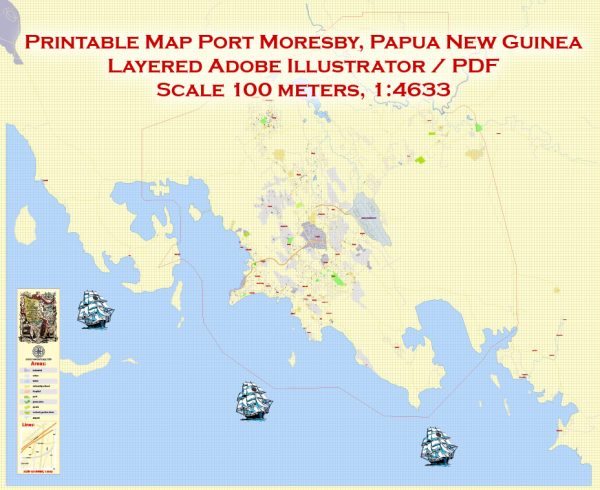Port Moresby, the capital city of Papua New Guinea, has a complex history of urban development that reflects the country’s evolution from a colonial past to a modern, diverse urban center. Here’s a brief overview of the history of urban development in Port Moresby:
- Pre-Colonial Period: Before the arrival of European colonizers, the area now known as Port Moresby was inhabited by indigenous communities with diverse cultures and languages. These communities engaged in trade, fishing, and agriculture.
- Colonial Era (Late 19th to Mid-20th Century):
- German Administration (1884-1914): The region was part of German New Guinea, and during this period, there was limited urban development.
- Australian Administration (1914-1975): After World War I, Australia took control of Papua New Guinea under a League of Nations mandate. Port Moresby became the capital of the Australian-administered territory. Urban development during this time was slow, with a focus on administrative and military infrastructure.
- World War II:
- Port Moresby gained strategic importance during World War II, with the Battle of the Coral Sea (1942) being a significant event in the region. The war brought attention to the area, and some development occurred to support military operations.
- Post-Independence (1975 Onward):
- Papua New Guinea gained independence from Australia in 1975, and Port Moresby continued to grow as the capital of the newly formed nation.
- Urbanization increased as people from rural areas migrated to the city in search of economic opportunities.
- The city faced challenges such as informal settlements, inadequate infrastructure, and social issues.
- Modern Development:
- In recent decades, efforts have been made to address the challenges faced by the city. Development projects have included the construction of infrastructure, such as roads and public buildings.
- Port Moresby has also become a hub for government offices, businesses, and diplomatic missions, contributing to its economic growth.
- Challenges:
- Despite progress, Port Moresby continues to face challenges like inadequate housing, sanitation issues, and traffic congestion.
- Informal settlements, such as those in areas like Hanuabada, highlight the urbanization challenges in providing basic services to all residents.
- Infrastructure Development:
- Ongoing efforts have been made to improve infrastructure, including the expansion of roads, the development of public spaces, and investments in utilities.
- Economic Significance:
- Port Moresby plays a vital role in the national economy, serving as a major economic and administrative center.
The history of Port Moresby’s urban development is intertwined with the broader historical context of Papua New Guinea. It reflects the challenges and opportunities faced by a city transitioning from a colonial past to a modern, independent nation.


 Author: Kirill Shrayber, Ph.D.
Author: Kirill Shrayber, Ph.D.